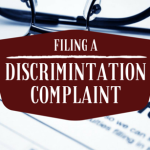Employees in Texas are protected from retaliation for objecting to discrimination in the workplace under both Title VII of the Civil Rights Act of 1964 and the Texas Labor Code. Like complaints of discrimination, if you believe that you are being retaliated against for complaining about discrimination, you must file what is called a Charge of Discrimination with the Equal Employment Opportunity Commission (EEOC) and/or Texas Workforce Commission (TWC).
Recently, the EEOC released its updated “Enforcement Guidance on Retaliation and Related Issues.” This document provides extensive information regarding retaliation claims and the statutes that are enforced by the EEOC. It has also updated the EEOC’s position on a number of more recent legal issues/opinions.
What does it mean to be engaged in ‘Protected Activity’?
Both public and private employers (who have more than 15 employees) in the State of Texas are prohibited from retaliating against an employee who has engaged in what is referred to as ‘protected activity’. To be considered protected activity, the employee must have complained about or opposed a discriminatory practice. This can include
- complaining about discrimination to your supervisor or Human Resources department
- filing a charge of discrimination with the EEOC or Texas Workforce Commission
- participating in an investigation (e.g. acting as a witness) of another employee’s complaints of discrimination.
What actions by an employer constitute retaliation?
There is no exhaustive list of each and every employment action that can be considered retaliatory, but these may include probation, suspension, termination, denial of promotion, denial of job benefits, and a transfer to a different position that either has lower pay or is generally less desirable. Aside from these adverse job-related actions, the retaliatory action could be harassment (verbal or physical behavior) of the employee which is meant to deter the employee from engaging in protected activity.
It is also very important to consider what facts or evidence support the connection between the employee’s protected activity and the adverse employment action that is taken against that employee. One piece of information that may support this connection is the timing of the adverse employment action. The closer in time the adverse employment action is to the protected activity, the easier it is to show the causal connection. Additionally, there may be oral or written statements by the individual recommending the adverse employment action which support this connection. Ultimately, you want to be able to show that the employer’s alleged reason for taking the adverse employment action is not truthful.
What do you do if you are experiencing retaliation in the workplace?
First, gather whatever evidence you may have to support your potential claim of retaliation. If you decide to pursue a claim of retaliation, you will need to file a Charge of Discrimination with the EEOC and TWC. But before filing the Charge, you should always contact an employment lawyer to discuss your legal options. There may be certain actions that an attorney can take to better protect your job (if you are still employed) or better position your legal claim.









